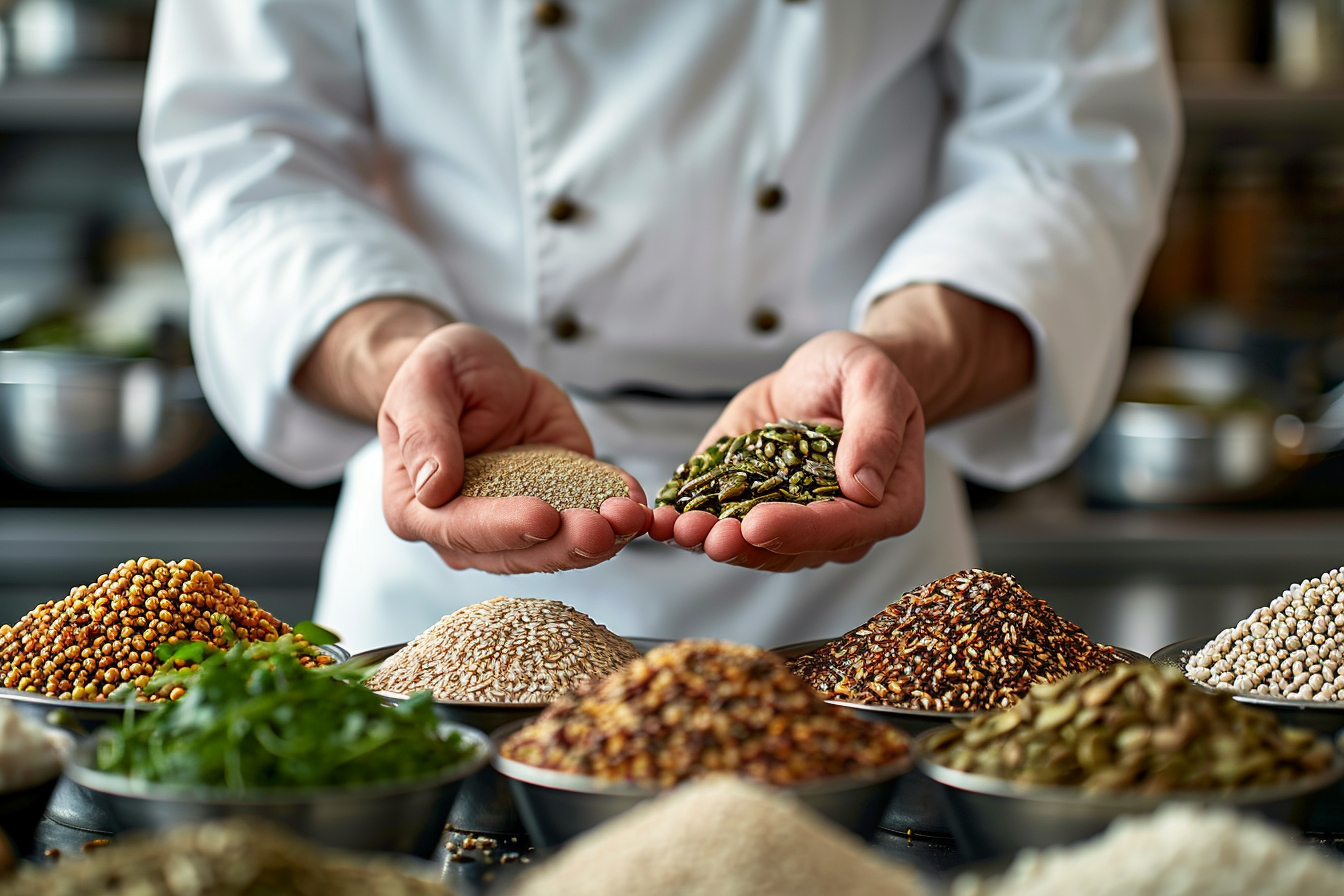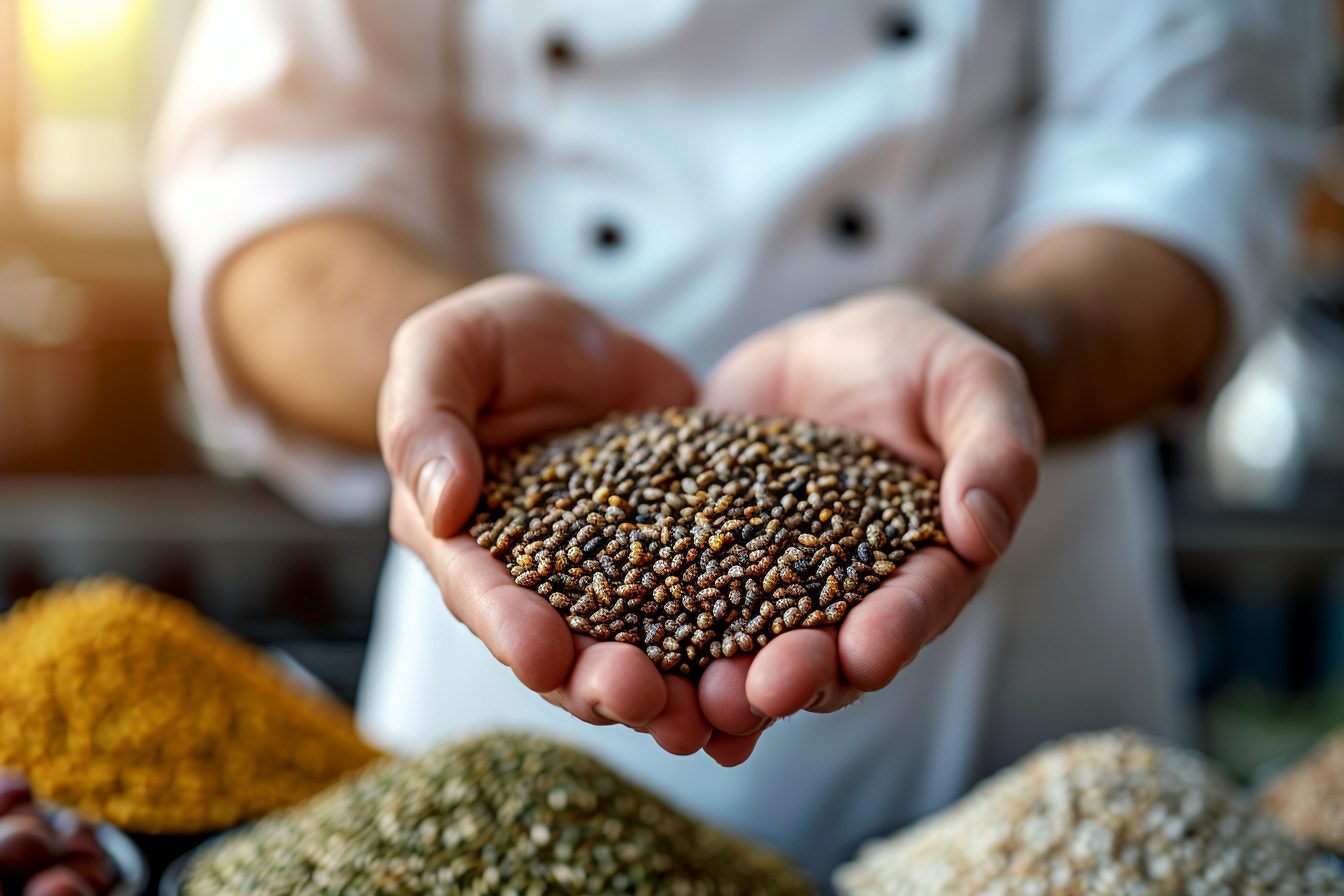
Embarking on a journey through the world of plant-based cuisine opens up a universe of culinary possibilities, especially when focusing on the versatility of seeds. Seeds, the embryonic plants waiting to sprout, are nutritional powerhouses and central to vegan gastronomy. Mastering techniques de cuisine végétalienne à base de graines requires an understanding of their unique properties, the transformative methods of preparation, and the art of infusing them with flavors to create dishes that are both delicious and nourishing. This comprehensive approach delves into the depths of cooking with seeds, ensuring that even the most discerning palates are delighted.
The nutritional significance of seeds in vegan cooking
Why Seeds?
Seeds are the unsung heroes of plant-based nutrition, offering a rich source of essential nutrients such as protein, omega-3 fatty acids, vitamins, minerals, and fiber. These attributes make seeds an integral component for those pursuing a vegan lifestyle.
Understanding seed varieties
Each variety of seed brings with it a distinct taste and texture, providing a unique role in the kitchen. Key players include chia, flax, hemp, pumpkin, sesame, sunflower, and quinoa. Exploring the properties of each seed allows chefs to tailor their dishes to achieve specific health benefits and culinary effects.
Preparation techniques that unlock the potential of seeds
The way seeds are prepared can significantly impact their nutritional availability and the overall quality of the finished dish.
Soaking and sprouting
Soaking seeds overnight not only makes them more digestible by reducing antinutrients but also enhances their nutrient profile. Sprouting, the natural process by which seeds germinate, further increases vitamin content and bioavailability of minerals, bringing forth a nuttier flavor and a satisfying crunch.
Toasting and roasting
Toasting and roasting seeds allow their flavors to deepen and develop. This heat treatment, whether in a dry pan or an oven, adds dimension to dishes through the introduction of a smoky, earthy quality. Care must be taken to avoid burning, as this can lead to bitter tastes and diminished nutritional value.
Grounding into meal or flour
Processing seeds into a meal or flour form opens doors to their use in vegan baking, as binders in patties, and as thickeners in soups and sauces. Flax and chia, when combined with water, create a gel-like mixture that is an excellent egg replacement.
Creating dairy alternatives
The blend of soaked seeds like sunflower or hemp with water can yield creamy plant-based milks, cheeses, and spreads that are rich in flavor and devoid of the additives often found in store-bought alternatives.
Infusing flavor into seed-based dishes
Striking the right balance of flavors is crucial in any form of cooking but is particularly noteworthy when working with seeds due to their subtle taste profiles.
Seasoning blends and marinades
Implementing imaginative seasoning blends can elevate seeds from a mundane ingredient to the star of the meal. Marinades imbue seeds with robust flavors, utilizing acidic components such as lemon juice or vinegar, aromatic herbs, and spices.
The role of umami
Understanding umami, the savory fifth taste, is invaluable. Ingredients such as nutritional yeast, soy sauce, and fermented pastes can impart a meaty depth to seed-based dishes, satisfying even the most insatiable appetites.
Combining textures
In the world of plant-based cooking, texture plays a pivotal role in the dining experience. The interplay between the crunch of roasted seeds, the creaminess of pureed spreads, and the succulence of vegetables can create multisensory dishes that are as pleasing to the palate as they are to the eye.
Innovative culinary applications of seeds
Incorporating seeds into everyday cooking requires experimentation and creativity. Below are some inspiring ways seeds can transform traditional dishes.
Seed-Based "meats" and proteins
Crafting "meat" substitutes such as burgers, sausages, and loaves from a base of seeds is a sustainable and healthful approach to mimicking the textures and flavors of animal-based proteins, without compromising on taste.
Salads and bowl foods
Seeds offer a quick and easy way to add crunch and nutrition to salads and bowls, acting as both a garnish and a substantial ingredient. Quinoa, with its complete protein profile, serves as an exceptional base for constructing nourishing bowl meals.
Sweet treats
Despite their savory applications, seeds can surprise in sweet preparations. Chia seed pudding, seed-based energy bars, and seed-packed muffins demonstrate how seeds can adapt to various roles within vegan patisserie.
Advanced seed preparation techniques
For the aspiring gourmet chef, mastering advanced techniques can elevate plant-based cuisine to new heights.
Molecular gastronomy
Incorporation of molecular gastronomy into vegan cooking allows chefs to create caviar-like spheres from seed milks, using techniques such as spherification. This modernist approach brings both novelty and elegance to dishes.
Seed fermentation
Harnessing the power of fermentation unlocks the potential of seeds to become nutritional probiotic carriers. Creating seed cheeses and yogurts through fermentation can also introduce a tangy zest to recipes.
Sous vide cooking
The precise temperature control of sous vide cooking is particularly suited to the preparation of seeds. Achieving a uniformly cooked texture while retaining maximum nutrient density is a triumph in the art of plant-based cuisine.
The impact of sustainable seed sourcing
Sustainability in the Kitchen
Choosing organically grown, non-GMO, and ethically sourced seeds is a statement that not only affects health but also supports the environment. The intentional selection of local and seasonal seeds furthers this commitment to sustainability.
Supporting biodiversity
Opting for heirloom and rare seed varieties helps to maintain agricultural biodiversity, ensuring the preservation of genetic diversity within food crops. Chefs can play a transformative role in sustaining heritage seed varieties by incorporating them into their menus.
Seeds, with their impressive nutrient profiles and versatile culinary applications, are indispensable in the world of plant-based cooking. The comprehensive approach to mastering techniques de cuisine végétalienne à base de graines spans from the simple to the sophisticated, catering to both amateur cooks and professional chefs alike. By embracing the full spectrum of preparation and cooking methods, one can craft seed-centric dishes that will amaze in their flavors, textures, and nutritional benefits. While the journey through vegan gastronomy is ever-evolving, the exploration of seeds offers boundless opportunities to enhance and innovate within the plant-based culinary landscape.
Though this discourse offers an extensive overview of the potential that seeds hold within vegan cuisine, it’s merely a glimpse into a much broader universe of plant-based culinary arts. With continuous innovation and a dedication to sustainability and creativity, the techniques and dishes centered around seeds are sure to evolve, reflecting the dynamic nature of gastronomy.

Leave a Reply